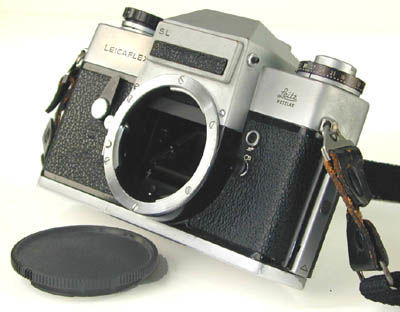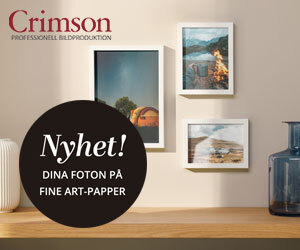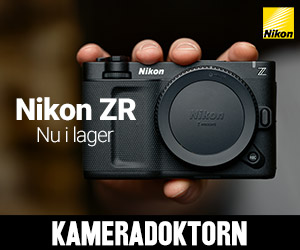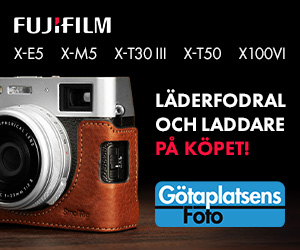Recension / Test / Priser / Fakta
Leicaflex SL krom
Summering
The second model of Leica reflex cameras, the Leicaflex SL was made from 1968 through 1974 by E. Leitz, Wetzlar, Germany. In the tradition of Leica cameras, the SL is a precision-crafted, robust tool ...Läs mer
Mer info
The second model of Leica reflex cameras, the Leicaflex SL was made from 1968 through 1974 by E. Leitz, Wetzlar, Germany. In the tradition of Leica cameras, the SL is a precision-crafted, robust tool made for the photographer who demands the utmost in durability and image quality.
The original Leicaflex camera, now known as the Leicaflex Standard, has a non-TTL light meter, and a viewscreen which, although extremely bright, is not a full-focussing screen and can not be used to evaluate depth-of-field, nor can it be used well with macro or very long lenses. The SL's design addressed these problems with a bright full-focussing viewscreen composed of coarse microprisms in the central area with fine microprisms in the balance of the screen, and a selective TTL light meter that measures only the region corresponding to the coarse microprism area of the viewscreen.
By modern standards the Leicaflex SL's features are minimal: no exposure or focus automation, no interchangable viewscreens, and not even a hot shoe. Just a reliable shutter, a clear, uncluttered viewfinder, an accurate meter. IMHO the lack of additional features makes the camera easier and quicker to work with: I don't have to set or verify exposure modes, focus modes, film transport mode, or custom functions. Each time I pick the camera up I know exactly how the meter is responding to the scene, the focus point is wherever I look in the viewfinder and I can override the camera's suggested exposure or focus in the blink of a neuron.
The technical stuff:
Shutter:
Mechanically-timed, horizontal-travel rubberized cloth, speeds from 1 to 1/2000 sec, plus B, continuously-variable except between 1/4 sec and 1/8 sec, and between 1/30 sec and 1/60 sec. Electronic flash sync is at 1/100 sec. The shutter action is smooth, solid, and responsive, with minimal lag time and exceptional sensory feedback. One of the SL's best components.
Mirror Lock-up: No mirror lock-up :-( but Jason Hall tells me of a trick he got from the Pentax list: "Wind on and then flick the shutter release (like you're flicking a pea off the table) not straight down but from the side and above (and not hard), this action releases the mirror and presets the aperture! Normal pressure/cable release will then fire the shutter and return the mirror (without vibration or clunk!!!). It's quite easy once you have the knack and easily repeatable!!" I've tried this a little and the trick is to flick the shutter release quickly enough that it starts the mirror upward but not so much that the button is still depressed when the mirror reaches the top of its motion.
Viewfinder:
Eye-level, non-interchangable prism and viewscreen, with meter needle and shutter speed display. Viewing is at full aperture, with DOF preview. The standard viewscreen has a coarse central microprism area with fine microprisms on the remainder of the screen. This screen can be changed by qualified service technicians to either a plain matte viewscreen or the SL2's standard viewscreen, which includes a split-image focussing thingie in the center of the coarse microprism area. My advice? Leave it alone.
Light meter: Selective through-the-lens CdS meter cell, powered by a 625 mercury battery or equivalent. Light for the meter cell passes through a semi-silvered region in the reflex mirror and is reflected by a secondary mirror to the meter cell on the floor of the mirror box. DIN film speeds from 12 to 39, ASA (now ISO) film speeds from 12 to 3200. Set exposure by lining up the meter's needle with the shutter speed/aperture/film speed lollipop in the viewfinder. The meter reads a limited area of the picture area corresponding to the coarse microprism area of the viewscreen. Because of the semi-silvered mirror, linear polarizing filters will cause erroneous meter readings. A circular polarizing filter should be used instead.
Film transport: It's your thumb. Rewind is a manual crank. It's all silky-smooth and silent.
Lenses: Leica-R lenses, with one, two or three metering cams, focal lengths from 15mm to 800mm, plus zooms, macro, and perspective-control lenses. The mechanical and optical quality of Leica-R lenses is legendary. The SL cannot use some R-lenses that were designed for the Leicaflex SL2 and later cameras, which have more clearance between the reflex mirror and the rear element of the lens. These lenses include the 16mm Fisheye-Elmarit-R, the 24mm Elmarit-R, the 35mm Summilux-R, the 80-200 f/4.5 VARIO-Elmar zoom, and the current version of the 50mm Summilux-R. Leica-R lenses with ROM electronic contacts cannot be used with any of the Leicaflex cameras, but many can be retrofitted with the Leicaflex metering cams. This modification requires removal of the ROM functions and contacts.
Bugs, quirks, problem areas: The original lens release lock is a red plastic tab which will break if it hasn't already. The replacement lock tab is metal. Replacing a broken lock is a trivial job, once you get the lens off the camera! The meter battery test button, on the side of the prism (see photo above), is positioned so that when you tilt the camera for a vertical composition, odds are that your left hand supporting the camera will press the button, making you think the meter has gone bad. The SL's viewscreen may yellow with age, and the viewfinder pentaprism may also start de-silvering in spots. Neither of these problems will affect picture quality but will make viewing and focussing less pleasurable than it ought to be. Replacing a viewscreen or viewfinder prism is an expensive repair but I consider the expense well worthwhile.
Tillverkare: Leica
Tillverkarens produktsida
The original Leicaflex camera, now known as the Leicaflex Standard, has a non-TTL light meter, and a viewscreen which, although extremely bright, is not a full-focussing screen and can not be used to evaluate depth-of-field, nor can it be used well with macro or very long lenses. The SL's design addressed these problems with a bright full-focussing viewscreen composed of coarse microprisms in the central area with fine microprisms in the balance of the screen, and a selective TTL light meter that measures only the region corresponding to the coarse microprism area of the viewscreen.
By modern standards the Leicaflex SL's features are minimal: no exposure or focus automation, no interchangable viewscreens, and not even a hot shoe. Just a reliable shutter, a clear, uncluttered viewfinder, an accurate meter. IMHO the lack of additional features makes the camera easier and quicker to work with: I don't have to set or verify exposure modes, focus modes, film transport mode, or custom functions. Each time I pick the camera up I know exactly how the meter is responding to the scene, the focus point is wherever I look in the viewfinder and I can override the camera's suggested exposure or focus in the blink of a neuron.
The technical stuff:
Shutter:
Mechanically-timed, horizontal-travel rubberized cloth, speeds from 1 to 1/2000 sec, plus B, continuously-variable except between 1/4 sec and 1/8 sec, and between 1/30 sec and 1/60 sec. Electronic flash sync is at 1/100 sec. The shutter action is smooth, solid, and responsive, with minimal lag time and exceptional sensory feedback. One of the SL's best components.
Mirror Lock-up: No mirror lock-up :-( but Jason Hall tells me of a trick he got from the Pentax list: "Wind on and then flick the shutter release (like you're flicking a pea off the table) not straight down but from the side and above (and not hard), this action releases the mirror and presets the aperture! Normal pressure/cable release will then fire the shutter and return the mirror (without vibration or clunk!!!). It's quite easy once you have the knack and easily repeatable!!" I've tried this a little and the trick is to flick the shutter release quickly enough that it starts the mirror upward but not so much that the button is still depressed when the mirror reaches the top of its motion.
Viewfinder:
Eye-level, non-interchangable prism and viewscreen, with meter needle and shutter speed display. Viewing is at full aperture, with DOF preview. The standard viewscreen has a coarse central microprism area with fine microprisms on the remainder of the screen. This screen can be changed by qualified service technicians to either a plain matte viewscreen or the SL2's standard viewscreen, which includes a split-image focussing thingie in the center of the coarse microprism area. My advice? Leave it alone.
Light meter: Selective through-the-lens CdS meter cell, powered by a 625 mercury battery or equivalent. Light for the meter cell passes through a semi-silvered region in the reflex mirror and is reflected by a secondary mirror to the meter cell on the floor of the mirror box. DIN film speeds from 12 to 39, ASA (now ISO) film speeds from 12 to 3200. Set exposure by lining up the meter's needle with the shutter speed/aperture/film speed lollipop in the viewfinder. The meter reads a limited area of the picture area corresponding to the coarse microprism area of the viewscreen. Because of the semi-silvered mirror, linear polarizing filters will cause erroneous meter readings. A circular polarizing filter should be used instead.
Film transport: It's your thumb. Rewind is a manual crank. It's all silky-smooth and silent.
Lenses: Leica-R lenses, with one, two or three metering cams, focal lengths from 15mm to 800mm, plus zooms, macro, and perspective-control lenses. The mechanical and optical quality of Leica-R lenses is legendary. The SL cannot use some R-lenses that were designed for the Leicaflex SL2 and later cameras, which have more clearance between the reflex mirror and the rear element of the lens. These lenses include the 16mm Fisheye-Elmarit-R, the 24mm Elmarit-R, the 35mm Summilux-R, the 80-200 f/4.5 VARIO-Elmar zoom, and the current version of the 50mm Summilux-R. Leica-R lenses with ROM electronic contacts cannot be used with any of the Leicaflex cameras, but many can be retrofitted with the Leicaflex metering cams. This modification requires removal of the ROM functions and contacts.
Bugs, quirks, problem areas: The original lens release lock is a red plastic tab which will break if it hasn't already. The replacement lock tab is metal. Replacing a broken lock is a trivial job, once you get the lens off the camera! The meter battery test button, on the side of the prism (see photo above), is positioned so that when you tilt the camera for a vertical composition, odds are that your left hand supporting the camera will press the button, making you think the meter has gone bad. The SL's viewscreen may yellow with age, and the viewfinder pentaprism may also start de-silvering in spots. Neither of these problems will affect picture quality but will make viewing and focussing less pleasurable than it ought to be. Replacing a viewscreen or viewfinder prism is an expensive repair but I consider the expense well worthwhile.
Tillverkare: Leica
Tillverkarens produktsida
Recensioner
Forumdiskussioner Det finns just nu inga diskussioner kopplade till denna produkt. Det kan ändå finnas diskussioner som går att hitta med sökfunktionen.
Till salu i Köp&Sälj Det finns just nu inga publicerade radannonser med denna produkt.
Bilder tagna med produkten
Det finns just nu inga publicerade bilder med denna produkt.
Ägare
| Medlem | Lagd i kameraväska + |
|---|---|
| Tobias Magnesjö | 2005-12-21 21:20:15 |
| immen | 2006-10-25 18:01:31 |
| HCM | 2007-03-16 10:52:05 |
| tonai | 2008-11-25 15:57:19 |
| KRISTER48 | 2009-12-31 14:23:17 |
| Hampus_6 | 2012-11-17 17:04:08 |
| t_ehrngren | 2015-02-04 19:55:15 |
Ser du något felaktig information? Kontakta oss och beskriv felet noga så skall vi kika på det.








Att använda: 4 Hållbarhet: 5
MINUS: om nåt då är det tyngden, särskild om man tar vissa objektiv som väger bly
Den här kameran har under sista tiden blivit en av mina absoluta favoriter, såväl i den normala versionen som i motoriserat version. Varför kan man fråga sig.
Svaret är framför allt sökaren. Långt innan Nikon kom med sina HP sökare för glasögonbärare har leica haft en sökare som man kan se i sin helhet med glasögon. Den är mycket ljust och mikroprismerna är användbara ochså med ljussvaga objektiv. Sökaren saknar motstycke än idag.
Fördelen delar den i princip med alla Leicaflex kameror från ur-Leicaflexen till SL2:an.
Kameran är mycket gedigen byggd och komer troligtvis att fungera i många årtionden till. Jag har två ex som jag har skickat in till rengöring och uppsmörjning plus konvertering till 1,5V, annars behöver den 1,35V. Man kan klarar sig utan konvertering men det kräver lite eftertanke och man måste prova sig fram med mätaren.
Exponeringsmätning är en spotmätning, något som jag uppskattar mycket.
Det finns ytterligare en fördel som jag gillade stort hos Nikon F2, nämligen steglös inställbara tider. Här gäller det dock hela tidsområdet, hos Nikon var det bara från 1/60 och kortare. Det här är helt outstanding.
Om Objektiven behöver man inte säga nåt, Leica är då i en klass för sig.
Kamerans ljustätningar är inga skumtätningar och kommer troligtvis aldrig gå sönder
Liknande produkter: ja har provat många kameror, framför allt Nikon, Olympus och Minolta. Allt är övergivit till förmån för Leica.
Kundtjänst: Tyvärr nedlagt av åldersskäl...Fotomechanik Reinhardt, Leicas egen Gud i Tyskland
Att använda: 5 Hållbarhet: 4
MINUS: - en aning tjock och svårgreppad
Bästa spegelreflexsökare jag någonsin använt (Nikon F2, Canon New F1 mfl), ljus, stor, finkornig. Bästa objektiv jag använt (35/2.8 och 90/2.8), lika bra som Leica CL:s 40/2 som är superbt. Numera övergiven pga digitalkameror.
Köpt hos: LP-foto auktion
Hållbarhet: 5
MINUS: Tung. Ligger inte lika fint i handen som en mätsökarleica. Spotmätning på gott och ont.
Kamera som kom i slutet av 70-talet. Gediget bygge i metall. Utstrålar kvalité. Påminner i uppbyggnaden om kameror från denna tid. (T ex Minolta Srt 101). Men något större. Egenhet - har endast spotmätning. Inte så snabbarbetad. Kräver tänkande fotograf när man mäter ljuset. Inte så stort mätomfång heller. Ägde ett ex i början av åttiotalet, med tre objektiv. Mycket fina gluggar! Men använde ändå mest min Nikon F2 och min Fm. Mycket smidigare kameror. det blev Leica M2 istället så småningom.